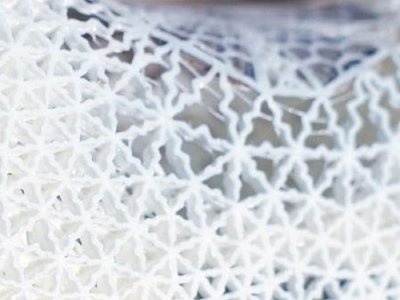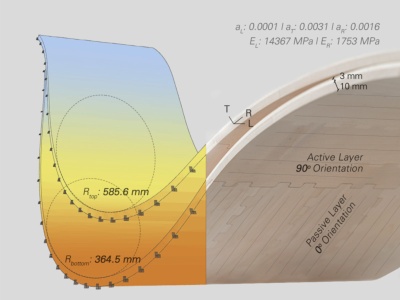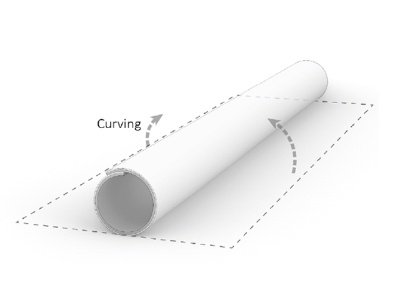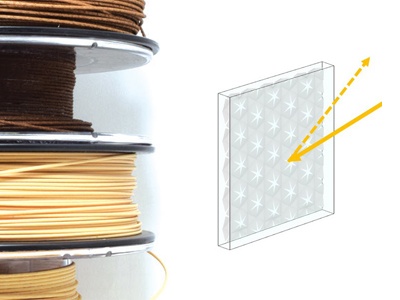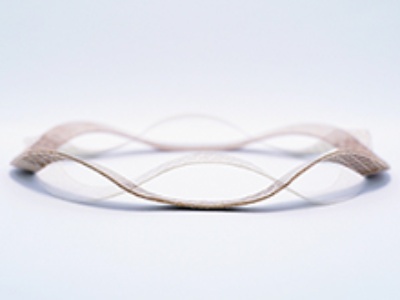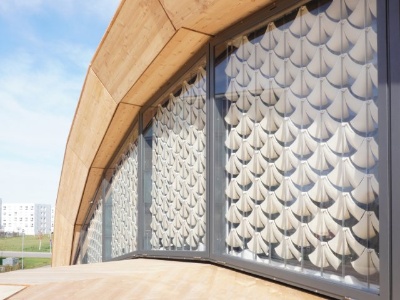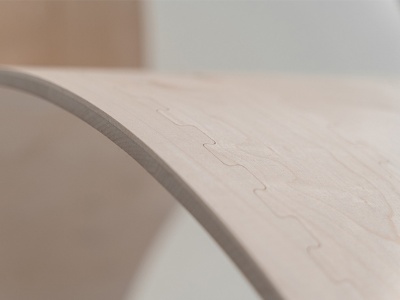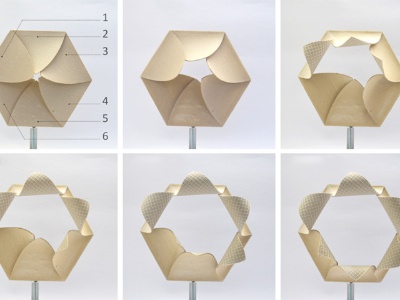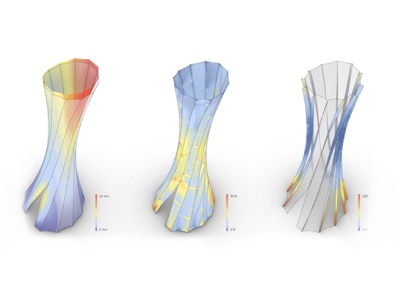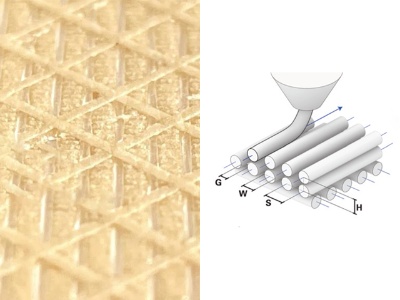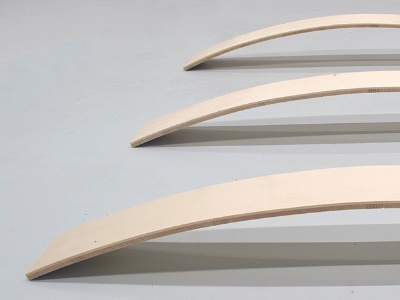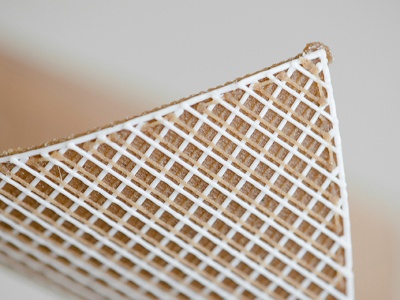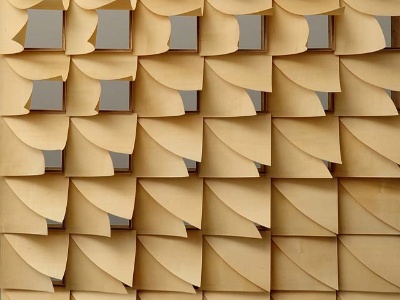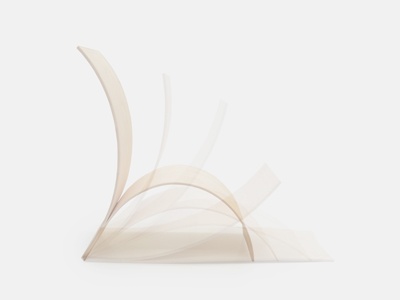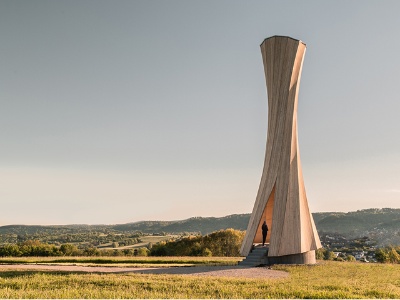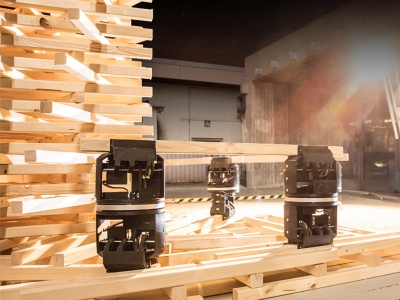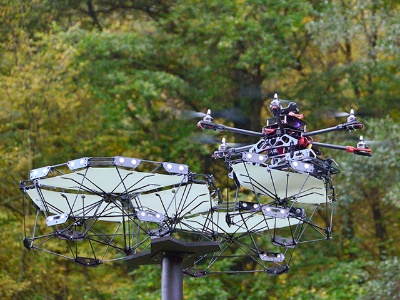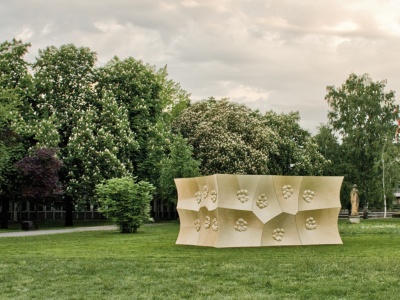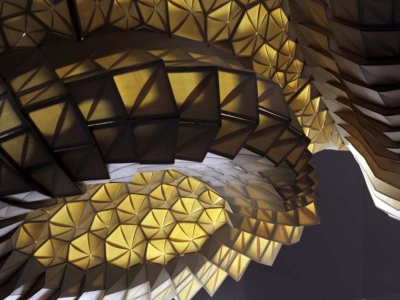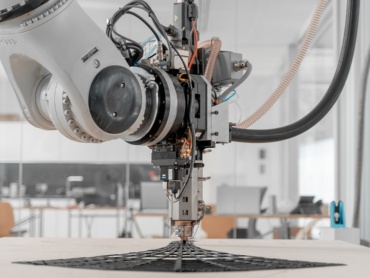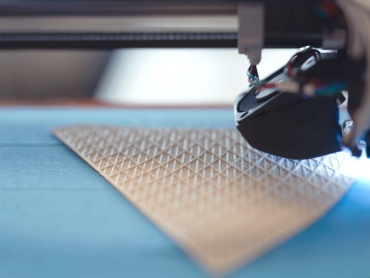Related Tools and Infrastructure
Selected Publications
2025
- Bechert, S., Schlopschnat, C., Göbel, M., Aicher, S., Menges, A., & Knippers, J. (2025). livMatS biomimetic shell: Structural advancements of segmented timber shells towards permanent building constructions. Structures, 79, 109524. https://doi.org/10.1016/j.istruc.2025.109524
2024
- Tahouni, Y. (2024). Programming shape-change : integrative computational design of materials, mesostructures, and motion mechanisms for 4D-printing (A. (Prof. ). Menges, Ed.). Stuttgart : Institute for Computational Design and Construction, University of Stuttgart. http://elib.uni-stuttgart.de/handle/11682/15521
- Menges, A., & Knippers, J. (2024). Biobasierte Materialien, bioinspirierte Strukturen. Detail, Article 7/8.
- Cheng, T. (2024). Material programming for 4D-printing : architected mesostructures for bioinspired self-shaping (A. (Prof. ). Menges, Ed.). Stuttgart : Institute for Computational Design and Construction, University of Stuttgart. http://elib.uni-stuttgart.de/handle/11682/15571
- Cheng, T., Tahouni, Y., Sahin, E. S., Ulrich, K., Lajewski, S., Bonten, C., Wood, D., Rühe, J., Speck, T., & Menges, A. (2024). Weather-responsive adaptive shading through biobased and bioinspired hygromorphic 4D-printing. Nature Communications, 15, Article 1. https://doi.org/10.1038/s41467-024-54808-8
2023
- Sahin, E. S., Cheng, T., Wood, D., Tahouni, Y., Poppinga, S., Thielen, M., Speck, T., & Menges, A. (2023). Cross-Sectional 4D-Printing: Upscaling Self-Shaping Structures with Differentiated Material Properties Inspired by the Large-Flowered Butterwort (Pinguicula grandiflora). Biomimetics, 8, Article 2. https://doi.org/10.3390/biomimetics8020233
- Wood, D., Cheng, T., Tahouni, Y., & Menges, A. (2023). Material Programming for Bio-inspired and Bio-based Hygromorphic Building Envelopes. In J. Wang, D. Shi, & Y. Song (Eds.), Advanced Materials in Smart Building Skins for Sustainability (1 ed.). Springer Nature Switzerland AG. https://doi.org/10.1007/978-3-031-09695-2_4
- Wood, D., Kiesewetter, L., Körner, A., Takahashi, K., Knippers, J., & Menges, A. (2023). HYGROSHELL – In Situ Self-shaping of Curved Timber Shells. In K. Dörfler, J. Knippers, A. Menges, S. Parascho, H. Pottmann, & T. Wortmann (Eds.), Advances in Architectural Geometry 2023 (pp. 43–54). De Gruyter. https://doi.org/10.1515/9783111162683-004
- Speck, T., Cheng, T., Klimm, F., Menges, A., Poppinga, S., Speck, O., Tahouni, Y., Tauber, F., & Thielen, M. (2023). Plants as inspiration for material-based sensing and actuation in soft robots and machines. MRS Bulletin. https://doi.org/10.1557/s43577-022-00470-8
2022
- Akbar, Z., Wood, D., Kiesewetter, L., Menges, A., & Wortmann, T. (2022). A Data-Driven Workflow for Modelling Self-Shaping Wood Bilayer, Utilizing Natural Material Variations with Machine Vision and Machine Learning. In J. van Ameijde, N. Gardner, K. H. Hyun, L. Dan, & U. Sheth (eds.), CAADRIA proceedings: Vol. Volume 1 (pp. 393–402). CAADRIA. https://doi.org/10.52842/conf.caadria.2022.1.393
- Correa, D. (2022). 4D printed hygroscopic programmable material architectures. ICD Research Report, Article 9. https://doi.org/10.18419/opus-12374
2021
- Tahouni, Y., Krüger, F., Poppinga, S., Wood, D., Pfaff, M., Rühe, J., Speck, T., & Menges, A. (2021). Programming sequential motion steps in 4D-printed hygromorphs by architected mesostructure and differential hygro-responsiveness. Bioinspiration & Biomimetics. https://doi.org/10.1088/1748-3190/ac0c8e
- Cheng, T., Wood, D., Kiesewetter, L., Özdemir, E., Antorveza, K., & Menges, A. (2021). Programming material compliance and actuation: hybrid additive fabrication of biocomposite structures for large-scale self-shaping. Bioinspiration & Biomimetics, 16, Article 5. https://doi.org/10.1088/1748-3190/ac10af
- Cheng, T., Thielen, M., Poppinga, S., Tahouni, Y., Wood, D., Steinberg, T., Menges, A., & Speck, T. (2021). Bio-Inspired Motion Mechanisms: Computational Design and Material Programming of Self-Adjusting 4D-Printed Wearable Systems. Advanced Science, 8, Article 13. https://doi.org/10.1002/advs.202100411
- Özdemir, E., Kiesewetter, L., Antorveza, K., Cheng, T., Leder, S., Wood, D., & Menges, A. (2021). Towards Self-shaping Metamaterial Shells: A Computational Design Workflow for Hybrid Additive Manufacturing of Architectural Scale Double-Curved Structures. Proceedings of the 2021 DigitalFUTURES (CDRF 2021), 275–285. https://doi.org/10.1007/978-981-16-5983-6_26
- Wood, D. (2021). Material programming for fabrication : integrative computational design for self-shaping curved wood building components in architecture. ICD Research Report, Article 6. http://dx.doi.org/10.18419/opus-11968
2020
- Wood, D., Gronquist, P., Bechert, S., Aldinger, L., Riggenbach, D., Lehmann, K., Ruggeberg, M., Bugert, I., Knippers, J., & Menges, A. (2020). From Machine Control to Material Programming: Self-Shaping Wood Manufacturing of a High Performance Curved CLT Structure -- Urbach Tower. Fabricate 2020: Making Resilient Architecture, 50–57.
- Cheng, T., Wood, D., Wang, X., Yuan, P., & Menges, A. (2020). Programming Material Intelligence: An Additive Fabrication Strategy for Self-Shaping Biohybrid Components. Lecture Notes in Artificial Intelligence: Biomimetic and Biohybrid Systems - Proceedings of the Living Machines 2020 Conference, 12413, 36–45. https://doi.org/10.1007/978-3-030-64313-3_5
- Cheng, T., Tahouni, Y., Wood, D., Stolz, B., Mülhaupt, R., & Menges, A. (2020). Multifunctional Mesostructures: Design and Material Programming for 4D-printing. Symposium on Computational Fabrication (SCF ’20). https://doi.org/10.1145/3424630.3425418
- Correa, D., Poppinga, S., Mylo, M., Westermeier, A., Bruchmann, B., Menges, A., & Speck, T. (2020). 4D pine scale: biomimetic 4D printed autonomous scale and flap structures capable of multi-phase movement. Philosophical Transactions of the Royal Society A, 378, 20190445. https://doi.org/10.1098/rsta.2019.0445
- Tahouni, Y., Cheng, T., Wood, D., Sachse, R., Thierer, R., Bischoff, M., & Menges, A. (2020). Self-shaping Curved Folding: a 4D-printing method for fabrication of curved creased origami structures. Symposium on Computational Fabrication (SCF ’20). https://doi.org/10.1145/3424630.3425416
2019
- Grönquist, P., Wood, D., Hassani, M., Wittel, F. K., Menges, A., & Ruggeberg, M. (2019). Analysis of hygroscopic self-shaping wood at large scale for curved mass timber structures. Science Advances, 5, Article 9. https://doi.org/10.1126/sciadv.aax1311
2018
- Wood, D., Vailati, C., Menges, A., & Rüggeberg, M. (2018). Hygroscopically actuated wood elements for weather responsive and self-forming building parts – Facilitating upscaling and complex shape changes. Construction and Building Materials, 165, 782–791. https://doi.org/10.1016/j.conbuildmat.2017.12.134
- Poppinga, S., Zollfrank, C., Prucker, O., Ruehe, J., Menges, A., Cheng, T., & Speck, T. (2018). Toward a New Generation of Smart Biomimetic Actuators for Architecture. Advanced Materials, 30, Article 19. https://doi.org/10.1002/adma.201703653
2016
- Wood, D., Correa, D., Krieg, O., & Menges, A. (2016). Material computation - 4D timber construction: towards building-scale hygroscopic actuated, self-constructing timber surfaces. International Journal of Architectural Computing (IJAC), 14, Article 1. https://doi.org/10.1177/1478077115625522
2015
- Correa, D., Papadopoulou, A., Guberan, C., Jhaveri, N., Reichert, S., Menges, A., & Tibbits, S. (2015). 3D-Printed Wood: Programming Hygroscopic material transformation. 3D Printing and Additive Manufacturing, 2, Article 3. https://doi.org/1089/3dp.2015.0022
2014
- Reichert, S., Menges, A., & Correa, D. (2014). Meteorosensitive Architecture: Biomimetic Building Skins Based on Materially Embedded and Hygroscopically Enabled Responsiveness. Computer-Aided Design, 60, 50–69. https://doi.org/10.1016/j.cad.2014.02.010
Contact Information

Tiffany Cheng
Dr.-Ing.Research Group Leader | Material Programming



